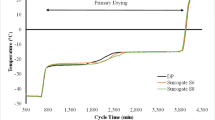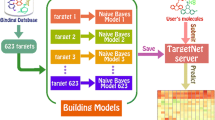Summary
The privacy of chemical structure is of paramount importance for the industrial sector, in particular for the pharmaceutical industry. At the same time, companies handle large amounts of physico-chemical and biological data that could be shared in order to improve our molecular understanding of pharmacokinetic and toxicological properties, which could lead to improved predictivity and shorten the development time for drugs, in particular in the early phases of drug discovery. The current study provides some theoretical limits on the information required to produce reverse engineering of molecules from generated descriptors and demonstrates that the information content of molecules can be as low as less than one bit per atom. Thus theoretically just one descriptor can be used to completely disclose the molecular structure. Instead of sharing descriptors, we propose to share surrogate data. The sharing of surrogate data is nothing else but sharing of reliably predicted molecules. The use of surrogate data can provide the same information as the original set. We consider the practical application of this idea to predict lipophilicity of chemical compounds and we demonstrate that surrogate and real (original) data provides similar prediction ability. Thus, our proposed strategy makes it possible not only to share descriptors, but also complete collections of surrogate molecules without the danger of disclosing the underlying molecular structures.
Similar content being viewed by others
Explore related subjects
Discover the latest articles and news from researchers in related subjects, suggested using machine learning.References
DiMasi J.A., Hansen R.W., Grabowski H.G., (2003) J. Health. Econ. 22: 151
Landers, P., The Wall Street Journal, 12/8/2003, 2003
Tetko I.V., Poda G.I., (2004) J. Med. Chem. 47: 5601
Tetko I.V., Bruneau P., (2004) J. Pharm. Sci. 93: 3103
Tetko, I.V., Drug Discov. Today, in press (2005)
Irwin J.J., Shoichet B.K., (2005) J. Chem. Inf. Model. 45: 177
Tetko I.V., Tanchuk V.Y., Villa A.E., (2001) J. Chem. Inf. Comput. Sci. 41: 1407
Tetko I.V., (2002) Neur. Proc. Lett. 16: 187
Tetko I.V., (2002) J. Chem. Inf. Comput. Sci. 42: 717
Tetko I.V., Villa A.E.P., Aksenova T.I., Zielinski W.L., Brower J., Collantes E.R., Welsh W.J., (1998) J. Chem. Inf. Comput. Sci. 38: 660
Hall L.H., Kier L.B., (1995) J. Chem. Inf. Comput. Sci. 35: 1039
Kier L.B., Hall L.H., 1999. Molecular Structure Description: The Electrotopological State, Academic Press, London
Kier L.B., Hall L.H., (1990) Pharm. Res. 7: 801
PHYSPROP database is available from Syracuse, Inc. http://www.syrres.com, 31/07/2005
Sadowski J., Gasteiger J., Klebe G., (1994) J. Chem. Inf. Comput. Sci. 34: 1000
Todeschini R., Consonni V., 2000. Handbook of Molecular Descriptors, WILEY-VCH, Weinheim
Weininger, D., Blaney, J.M. and Dixon, S., 1993 USA
Clement, O.O. and Guner, O.F. 229th American Chemical Society National Meeting & Exposition, ACS, San Diego, CA, March 13–17, 2005
Bologa, C., Olah, M. and Oprea, T.I. 229th American Chemical Society National Meeting & Exposition, ACS, San Diego, CA, March 13–17, 2005
Shen, L., Smith, K.M., Masek, B.B. and Pearlman, R.S. 229th American Chemical Society National Meeting & Exposition, ACS, San Diego, CA, March 13–17, 2005
Li M., Vitanyi P., 1997 An Introduction to Kolmogorov Complexity and Its Applications, Springer Verlag, Heidelberg
Filimonov, D. and Poroikov, V.V. 229th American Chemical Society National Meeting & Exposition, ACS, San Diego, CA, March 13–17, 2005
Abagyan, R. 229th American Chemical Society National Meeting & Exposition, ACS, San Diego, CA, March 13–17, 2005
Tetko, I.V. 229th American Chemical Society National Meeting & Exposition, ACS, San Diego, CA, March 13–17, 2005
Oprea T.I., (2002) J. Braz. Chem. Soc. 13: 811
Solov’ev V.P., Varnek A., Wipff G., (2000). J. Chem. Inf. Comput. Sci. 40: 847
Trepalin S.V., Gerasimenko V.A., Kozyukov A.V., Savchuk N.P., Ivaschenko A.A., (2002) J. Chem. Inf. Comput. Sci. 42: 249
Mestres, J. and Gregori-Puigjané, E. 229th American Chemical Society National Meeting & Exposition, ACS, San Diego, CA, March 13–17, 2005
http://www-groups.dcs.st-and.ac.uk/∼ ∼history/HistTopics/Fermat’s_last_theorem.html, 31/07/2005
Young, S.S., Karr, A. and Sanil, A.P. 229th American Chemical Society National Meeting & Exposition, ACS, San Diego, CA, March 13–17, 2005
Vapnik V.N., 1998 Statistical Leaning Theory, Wiley, New York
Walker M.J., (2004) QSAR Comb. Sci. 23: 515
Kappler, M.A., Allu, T.K. and Oprea, T.I. J. Chem. Inf. Model., (2005) in preparation
Wilson E.K., (2005) Chem. Eng. News 83: 24
Acknowledgement
The authors thank Scott Hutton for providing compounds from iResearch library (ChemNavigator) used in the current study, Cristian Bologa (University of New Mexico Division of Biocomputing) and Philip Wong (Institute for Bioinformatics) for their technical help. The authors thank Robert S. Pearlman for his constructive comments. Part of this work was supported by INTAS “Virtual Computational Chemistry Laboratory” http://www.vcclab.org grant (IVT) and by New Mexico Tobacco Settlement Funds for Biocomputing (TIO).
Author information
Authors and Affiliations
Corresponding author
Rights and permissions
About this article
Cite this article
Tetko, I.V., Abagyan, R. & Oprea, T.I. Surrogate data – a secure way to share corporate data. J Comput Aided Mol Des 19, 749–764 (2005). https://doi.org/10.1007/s10822-005-9013-3
Received:
Accepted:
Published:
Issue Date:
DOI: https://doi.org/10.1007/s10822-005-9013-3




